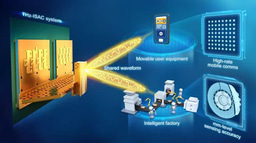Prolonged energy harvesting for ingestible devices
Published in Bioengineering & Biotechnology

During my Ph.D. in Professor Anantha Chandrakasan's Energy Efficient Circuits and Systems lab, I was working on an ingestible biosensor for low power in vivo sensing. As part of this work, I had the fortune of meeting Dr. Giovanni Traverso, whose group in collaboration with Prof. Robert Langer was working on week-long drug delivery systems [1] for the gastrointestinal tract and had previously demonstrated "battery armor" [2] to protect against mucosal injury in case of accidental ingestion of a battery. This unique environment prompted us to ask the question: was a conventional battery the only option to power our electronic capsule for long term gastric residence?
While researching possible alternative energy sources, we came across reports of in vitro studies of biocompatible galvanic cells [3,4,5] which were activated by the electrolytes of bodily fluids, and reports of edible gastric cells embedded into pills for short term (minutes-long) use [6]. These had many advantages including a long shelf life, since the electrolyte was supplied on demand, as well as less reliance on potentially toxic material like lithium. However, since these were designed for short term use, there was insufficient understanding of how a cell would behave in a long term gastric resident device. Hence we set out to design a wireless capsule to characterize a gastric cell in vivo for up to a week and demonstrate that the energy could be harnessed for sensing and wireless communication.
Not knowing how the cell would behave in the long term posed a challenge in designing a harvesting capsule up-front. So we first designed and deployed a wireless battery-powered "characterization" capsule to take detailed measurements of the cell over time using a controlled load impedance. This showed, for example, an initial steep decline in the cell voltage over the first hour (from 0.3 V to about 0.1 V), something that we simply could not capture in short tethered in vivo experiments. In addition, we measured the small amount of power generated by the cell in the intestine, which clearly correlated with the x-ray-determined position. While not strong enough to be harvested by a commercial harvester circuit, this could nevertheless provide new guidance for a custom harvester design based on this cell in future studies. An example of a characterization measurement is shown in Figure 1. With confidence in the electrical properties of the gastric cell, in particular the input voltage level (0.1 V) and power (1 µW/mm²), we then designed a battery-less harvesting capsule with commercial electronics and powered only by the cell. With this “self-powered” capsule, we demonstrated week-long temperature measurements every 12 seconds, with 900 MHz wireless communication to a basestation receiver located about 2 meters away.

Figure 1. Measurements from a characterization capsule. (a) Electrode voltage. (b) Peak power. (c) Internal temperature. (d) Correlation to x-ray position.
There are a number of future directions for this research. Perhaps the most important is miniaturization, supported by a custom harvester design tailored for the low cell voltage and power level we have measured. In addition, a more sophisticated battery chemistry in line with recent reports of biodegradable cells [7,8] may lead to dramatically improved performance of the cell. Finally, development of additional sensor modalities such as vital signs monitoring [9], as well as pH and pressure sensing [10] would greatly expand the data available from the capsule.
Banner photo credit: Diemut Strebe
Our paper: Nadeau, P. et al. Prolonged energy harvesting for ingestible devices. Nat. Biomed. Eng. 1, 0022 (2017).
References:
[1] Zhang, S. et al. A pH-responsive supramolecular polymer gel as an enteric elastomer for use in gastric devices. Nature Materials 14, 1065–1071 (2015).
[2] Laulicht, B., Traverso, G., Deshpande, V., Langer, R. & Karp, J. M. Simple battery armor to protect against gastrointestinal injury from accidental ingestion. Proceedings of the National Academy of Sciences 111, 16490–16495 (2014).
[3] Lee, K. B. Urine-activated paper batteries for biosystems. Journal of Micromechanics and Microengineering 15, S210 (2005).
[4] Jimbo, H. & Miki, N. Gastric-fluid-utilizing micro battery for micro medical devices. Sensors and Actuators B: Chemical 134, 219–224 (2008).
[5] Mostafalu, P. & Sonkusale, S. Flexible and transparent gastric battery: Energy harvesting from gastric acid for endoscopy application. Biosensors and Bioelectronics 54, 292–296 (2014).
[6] Hafezi, H. et al. An Ingestible Sensor for Measuring Medication Adherence. IEEE Transactions on Biomedical Engineering 62, 99–109 (2015).
[7] Yin, L. et al. Materials, Designs, and Operational Characteristics for Fully Biodegradable Primary Batteries. Advanced Materials 26, 3879–3884 (2014).
[8] Kim, Y. J., Wu, W., Chun, S.-E., Whitacre, J. F. & Bettinger, C. J. Biologically derived melanin electrodes in aqueous sodium-ion energy storage devices. Proceedings of the National Academy of Sciences 110, 20912–20917 (2013).
[9] Traverso, G. et al. Physiologic status monitoring via the Gastrointestinal Tract. PLoS ONE 10, e0141666 (2015).
[10] Maqbool, S., Parkman, H. P. & Friedenberg, F. K. Wireless Capsule Motility: Comparison of the SmartPill(R) GI Monitoring System with Scintigraphy for Measuring Whole Gut Transit. Digestive Diseases and Sciences 54, 2167–2174 (2009).



Please sign in or register for FREE
If you are a registered user on Research Communities by Springer Nature, please sign in